The Article
GSX 1000 Audio Amplifier: headphone amplifier for gamers
20th February 2017
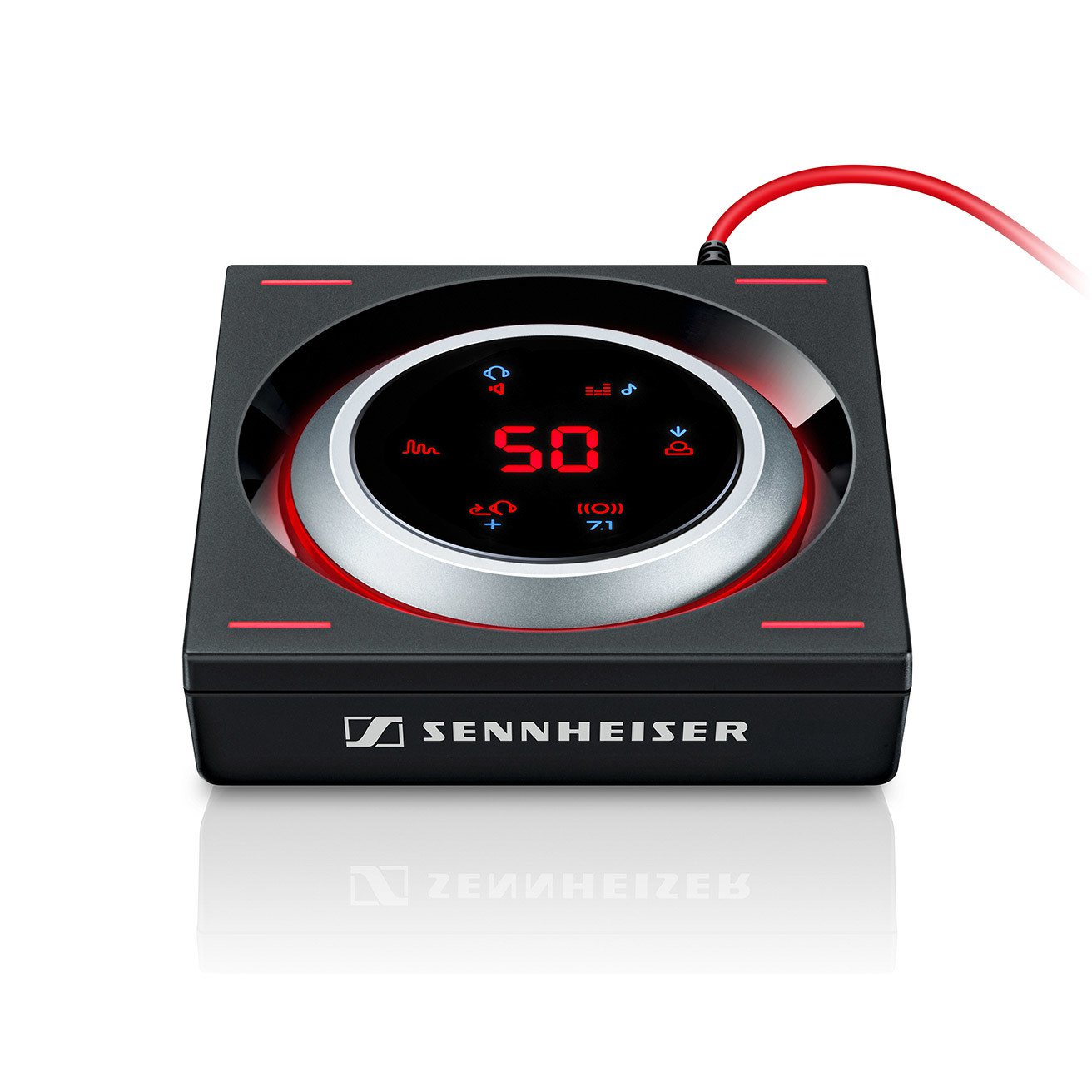
Looking for a feature-rich yet mobile and low-footprint headphone amp for your gaming headphones? Paul Rigby gives the Sennhesier GSX 1000 a try
Compatible with a PC or a Mac and mainly aimed at computer gaming, the GSX 1000 audio amplifier features Sennheiser’s intriguingly named Binaural Rendering Engine and its built-in 7.1 Virtual Surround Algorithm.
The compact unit features a LED touch panel and aluminium volume ring and requires no additional drivers, which will be a relief to PC users who must feel that they can’t sneeze without having to install a driver to be able to do so.
You also have the possibility to save up to four favourite settings. If you look at the accompanying images, you’ll see the four horizontal red lines on each corner of the upper fascia. They are the preset buttons.
The Main settings include the option to produce sound through a pair of headphones or speakers (via a Line Out socket to another hi-fi system), while the EQ settings alter the character of the sound, changing the amount of bass and treble required to enhance action gaming, speech and more. The Sound Focus option concentrates the sound output on the front or the rear or a mixture of the two for a more balanced output while the Virtual Surround changes from 2-channel to surround to provide a more immersive experience.
The Sidetone feature needs particular explanation. The headphone user can turn this option off or set it to ‘low’ for open back headphones or high for closed back or in-ear headsets.
The environment icon provides an ‘accurate’ sound option, one where your gaming world is in an enclosed space or one where your gaming world is in a more open environment.
Watch the walk round video (at the end of this review) to see all of these features in action.
Spanning 143 x 70 x 139mm and weighing in at just 390g, the GSX 1000 is mobile and easy to manipulate.
IN USE
The purpose of reviewing this amplifier was purely to serve as an adjunct to my GSP 300 headphones – obviously, a 2-channel system – and that review, which you can find HERE, and nothing more than that. Hence, any speaker-related and surround sound-specific features will have to be left for another time.
I liked the fact that the rather bright interface light automatically dimmed, if not used, after a few seconds. The colour of the interface lighting could be an issue for some, though. The rather aggressive red-coloured lighting may prove unattractive to a selection of gamers who might prefer a softer option for the eyes. This is a personal preference point, though, not a strict design fault.
SOUND QUALITY
I began by playing a range of games on my Mac in conjunction with my Sennheiser GSP 300 headphones. I played a range of games including UFO and Lego Star Wars and found that the addition of the amplifier added a great deal of additional bass. More than that, though, the lower frequencies were more informative in terms of detail with added character. Hence, there were times within the games when the atmosphere was ramped up because the music and effects adopted a more portentous air. The greater sense of threat and foreboding attached a new level of envelopment to the gameplay that pulled me further into the game.
Apart from the crackling electricity that now emanated from passing machinery, the sheer chaotic ambience that combat spawned added a new surge of adrenaline to the gameplay.
I decided to test each and every sound altering affect, accessible from the front fascia. To see how each one changed the gaming experience for the better – or otherwise.
I began with EQ. Moving the EQ settings to Story mode, the sound offered a balance of the dramatic with a broad sonic enhancement without any undue emphasis. Switching this EQ off killed the atmosphere, Esports was too tinny while Music added too much bass. For gaming, go for Story mode.
What also made the gaming effects so effective was entering into virtual 7.1 surround mode which made my 2-channel headphone experience that bit better: immersive with power and ambience. The similarly pointed Surround Amplification was not really for me, though. Merely shifting sound towards a front or rear emphasis only changed the sound direction. It didn’t improve matters general gaming level.
Next on the list was Sidetone Level which was too subtle to make much difference with my headphones.
The Reverb level did affect the music and sound, though. Ramping this option up to its fullest setting added space and air, especially in terms of gun fire and background effects.
For gaming, then, the GSX 1000 proved to be effective and noteworthy but is it even worth bothering about in terms of music-only play? That is, as an audiophile headphone amplifier for a desk-based hi-fi system? Why use the GSX 1000 for music play? Why not? While it’s there, why not make full use out of it?
Playing Shout from Tears for Fears as a MP3, surround mode proved to be the most effective in terms of the presentation of the soundstage, adding a bass balance that was missing in 2.0 mode.
EQ mode in the ‘off’ position was best in terms of giving a neutral presentation. This stopped the amplifier masking important details.
Adding full reverb provided essential air and space which enhanced the dynamic performance.
Other modes proved less significant and were, therefore, ignored. MP3 is a poor quality audio format but the GSX 1000 amplifier gave this format much needed sonic support, almost filling in the gaps that were shown by the format itself. That is, the missing sonic information in the format was partly filled by the amplifier through sonic EQ and other sound emphasis.
Playing Bob Marley’s I Shot The Sheriff at 24bit/96kHz changed the goalposts, though. Principally because there was more musical information available for the source to draw from. Settings remained ‘as is’ with EQ turned off and 7.1 remained on as did the reverb.
This time, the hardware (that is, the combination of headphones and amplifier) itself struggled to deliver the best from the music. Bass was clunky and blurred into the midrange, masking much of the detail while the vocals were rather constricted. But look, the GSP 300 headphones were not designed specifically with audiophile music in mind. So I changed the headphones to higher-end Sennheiser HD650s, a classic design aimed at getting the best from your sound for the money while retaining the GSX 1000 amplifier.
With the HD 650s in place, playing music though the GSX 1000 amplifier in 2-channel mode was pleasant for the very first time. Upping the volume in this mode added power and increased the quality of important information. EQ remained in the off position, other settings added uncomfortable sonic emphasis. Hence, a more neutral suite of setting modes was best in this configuration.
That said, the surround mode remained an attractive option. It added breadth and height to the soundstage and also allowed excellent detail retrieval at lower volumes. In this configuration, then, I would persist with full reverb.
CONCLUSION
As a music-based headphone amplifier, the GSX 1000 is surprisingly accomplished for the price, especially so considering that its primary focus is other forms of gaming entertainment. OK, it doesn’t have the same level of nuance and fragility as other, more audiophile, designs offer you. That said, as a sort of music-related fall-back/back-up to a gaming amplifier, it’s definitely usable.
As a specialist gaming amplifier, though, the GSX 1000 offers both sonic impact and an immersive performance that adds a new dimension to gaming without going too far and without over doing it in terms of the sonic fireworks. The wealth of EQ options are genuinely useful, adding lots of alternatives for a bespoke sound-tailoring for your ears.
SENNHEISER GSX 1000 headphone amplifier
Price: £200
Website: en-uk.sennheiser.com
GOOD: easy of use, feature options, compact size, general sound quality for the money
BAD: nothing
RATING: 8
REFERENCE SYSTEM
Sony PlayStation 4 console
Apple iMac computer
Sennheiser HD650 headphones
Astell&Kern AK120 DAP
Sound BlasterX H7 – 7.1 Surround Pro Gaming Headset

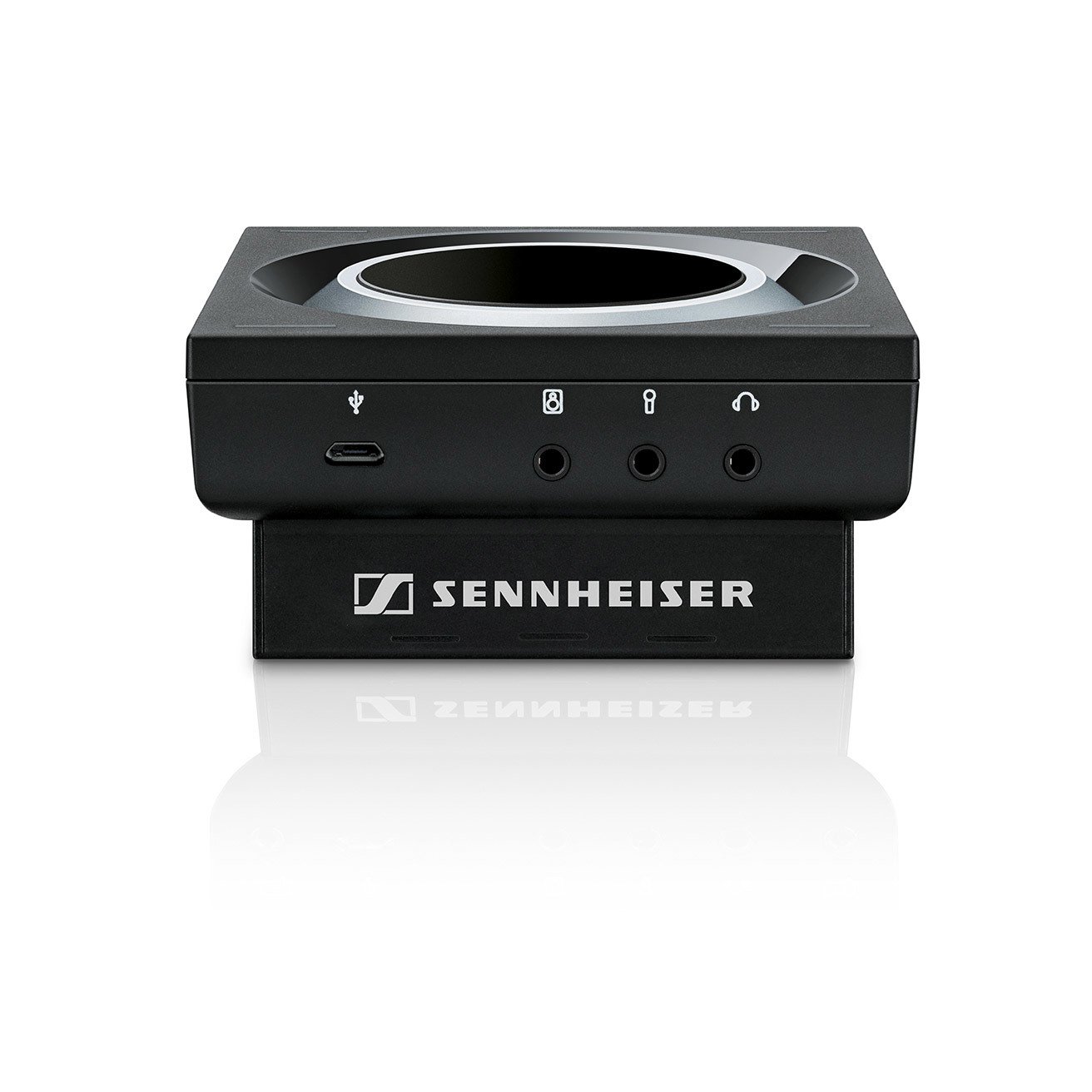
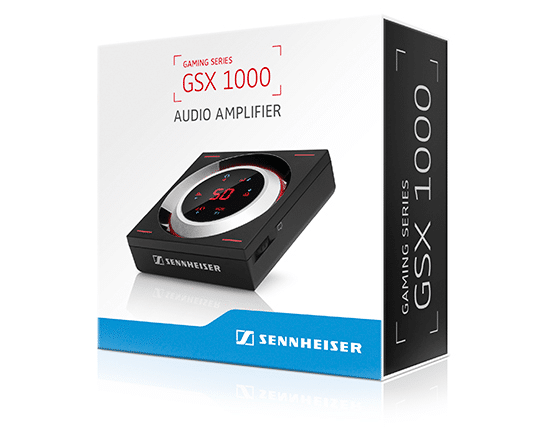
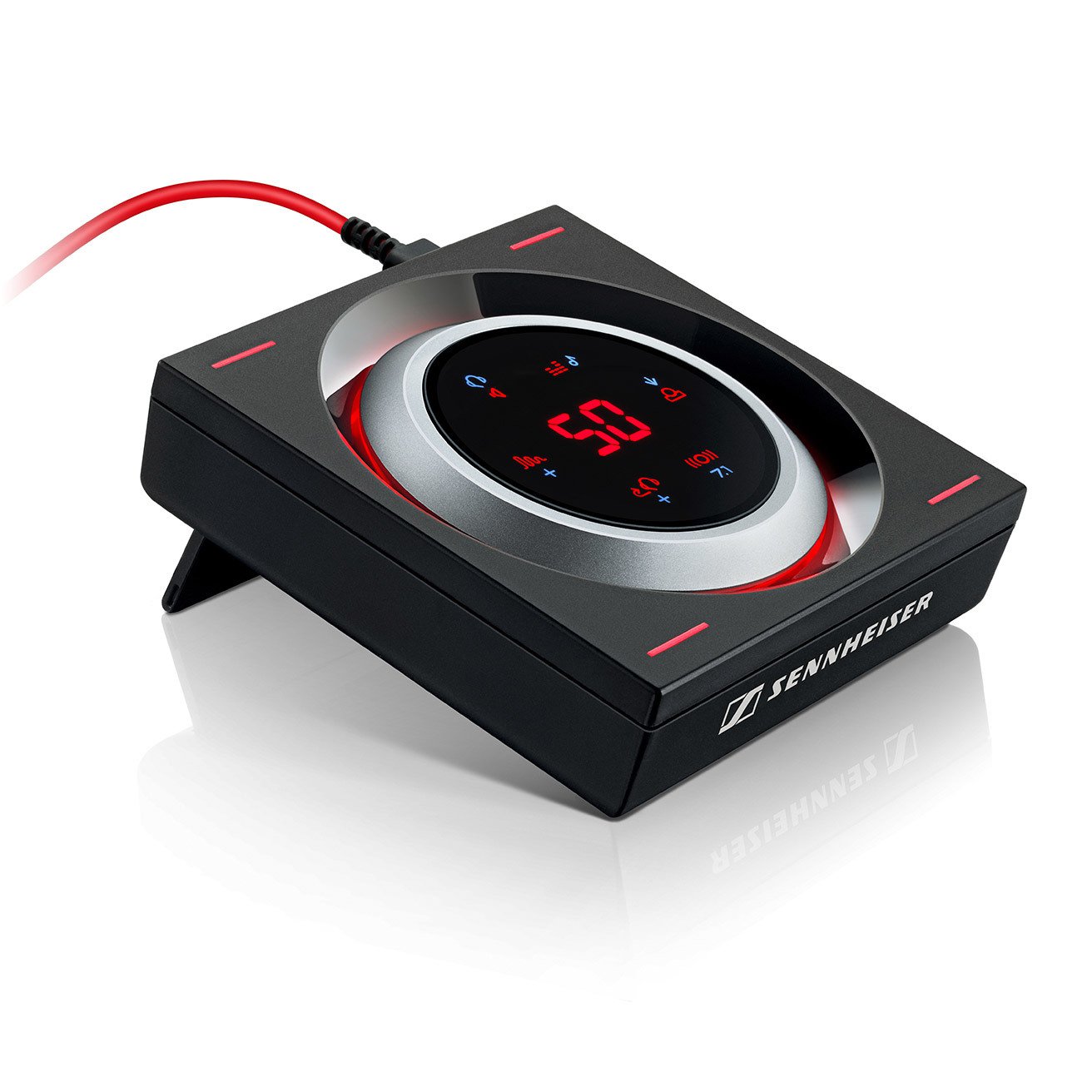


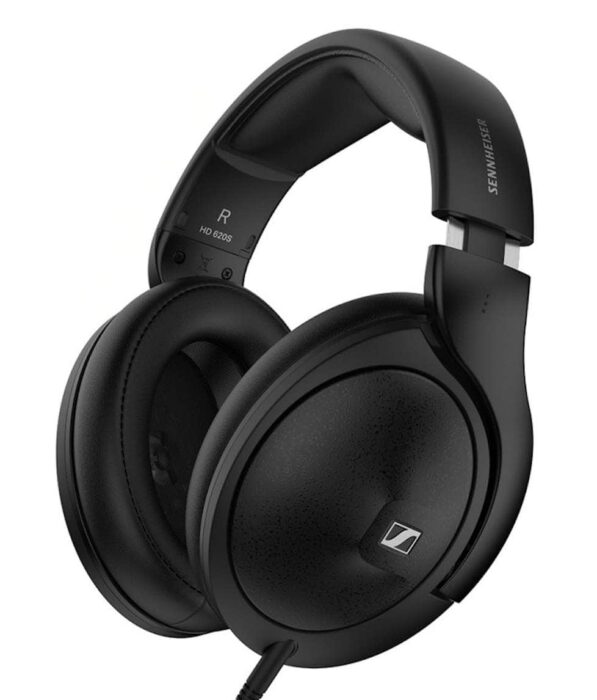

Except that it ain’t any real quality headphone amp, but clearly basic stuff with gaming hype profit margins.
https://en-us.sennheiser.com/global-downloads/file/8226/GSX_1000_-_Fact_sheet.pdf
1 Vrms into 32 ohms is lower than 1,1 Vrms of integrated Realtek chips on motherboards!
Lot cheaper than it basic sound cards easily manage that, not to mention higher end sound cards.
And while avoiding Dolby Headphone’s bass bloat and public path/ceramic tiled room echo sound Creative still has better binaural-simulation:
https://www.youtube.com/watch?v=b6CDgwtVcbg
Actually lot cheaper SB Z has beefier headphone output at 1,3 Vrms to 32 ohms.
Heck, price of this GSX would also cover separate Objective2 hp amp designed to be pathologically neutral and capable to driving almost any possible headphone…
Just thought I’d point out a somewhat pedantic point….
Red is actually the “softest” light colour, being the lowest frequency of light discernable to the human eye.
Not sure how bright the lighting on this unit, but any harshness would be down to that rather than the colour.
But, otherwise, thanks for an informative review!
üéõüéßüîä
No problem, Pete. You’re not pedantic and I don’t recognise the word as such. “Pedantic” is actually a favourite word of those too lazy to check facts and seek out truths. So, don’t worry about it 🙂 I don’t doubt any scientific data that you might have to hand but, having said that, I have talked to many people who find a violet light soothing, more so than red. That’s just one example. Various shades of green are other examples. I suppose it’s a perception thing and one of personal taste.
No, you are right Mr. Rigby. This is why correctional institutions and the like use greens and greenish-blue colors instead of colors with more red to them. It’s more soothing/relaxing. Keeps aggravation down. So as Pete pointed out, red is a softer light but at the same time it is not so soothing and relaxing. So in certain situations, for instance viewing a monitor’s screen, a red tint can benefit a person’s eye’s because it is a softer light than the blue light most monitor’s default to which is known to cause eye stress. But in instances where you are looking more at the color of something than the light itself, red is definitely not as soothing and can actually cause stress.
A small point… I – as a PC user – feel ‚Äúlooked down at‚Äù when reading comments like this: “…requires no additional drivers, which will be a relief to PC users who must feel that they can‚Äôt sneeze without having to install a driver to be able to do so‚Ķ”, which are also not the truth.
First and fore most Windows (10, current version) supports mostly all recent hardware or it installs the basic driver set itself without the necessity for users to search for drivers. Also, most USB soundcards do not require drivers at all in general (I own about 20 of them of various manufacturers and they are ALL working after just plugging them in). If you want to use SPECIAL features of those soundcards, you might need to install the respective software … might… but it is not mandatory for the soundcard to work.
Second… Concerning drivers in general: You don’t need to install drivers every day. It’s just needed when you install a new hardware that is not inherently supported by the OS. You don’t even NEED to update the drivers. Just some food for thought… and sorry. I don’t mean to critique.
Thanks for the review!
Not a problem. We’re both right, I reckon. I take your point re Windows 10, although not everyone uses Windows 10. I take your point re the one time installation although, generally speaking, that’s one more install than a Mac user has to do.
As I’m coming from a specialist hi-fi direction and not an internal sound card angle (for example), there are more specialist Windows drivers still required – even for Windows 10. Here’s one example: http://www.chordmojo.com/support/#driver and another https://benchmarkmedia.com/pages/dac-drivers.
I could have supplied another 30-40 of those.
Things are improving and Windows is slowly improving its automatic driver installation routine but it’s not perfect yet. That’s partly down to Microsoft and partly down to the individual hi-fi brand.
Part of the problem is the nature of the beast. The PC is an open system which has its pros and cons while the Mac is a closed system which also has its pros and cons. Driver installation being one of those.
And with this comment I completely agree with you.
Just to clarify: I was referring to the “usual” USB soundcards like the SB play!, Behringer DAC, FiiO E10k or Xonar Ux or the cheap USB soundcards that you can buy for 2 – 20$/‚Ǩ for the mainstream users. They are plug and play… Software is only needed for more features.
Bought the GSX 1000 and I‚Äôm driving my 250Œ© DT880s with it and what is interesting is the possibility to save 4 presets on the device… The sound is good. But still… Sometimes I feel that if I listen to things in game (because it’s a gaming device) I still prefer 2.0 to virtual 7.1. Things are much better to localize (? sorry, no native speaker).
One last thing: Thanks for taking the time to reply!
And thank you for replying too 🙂